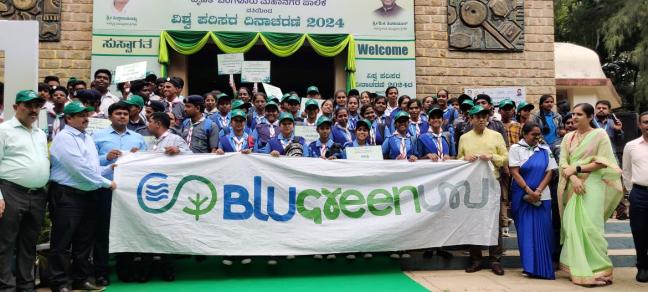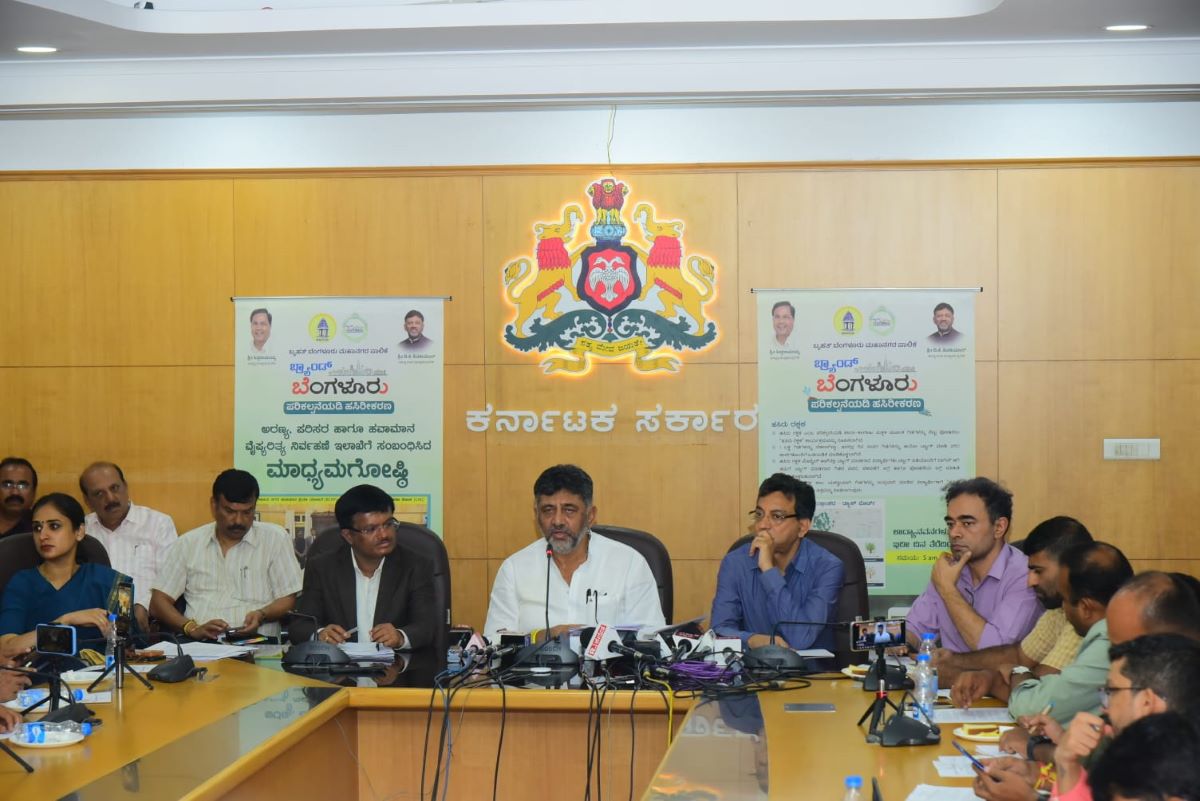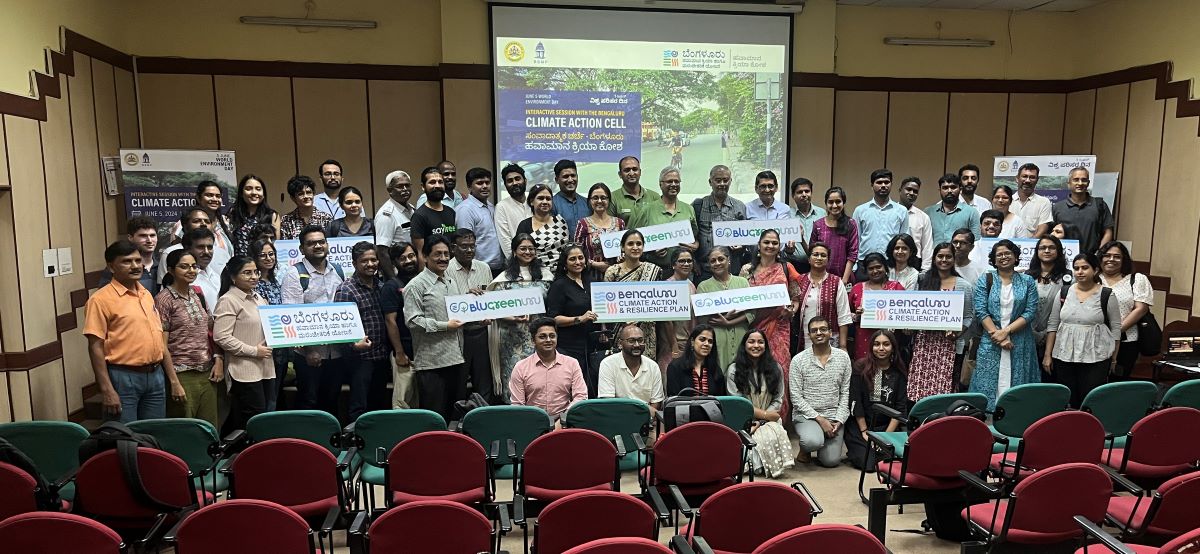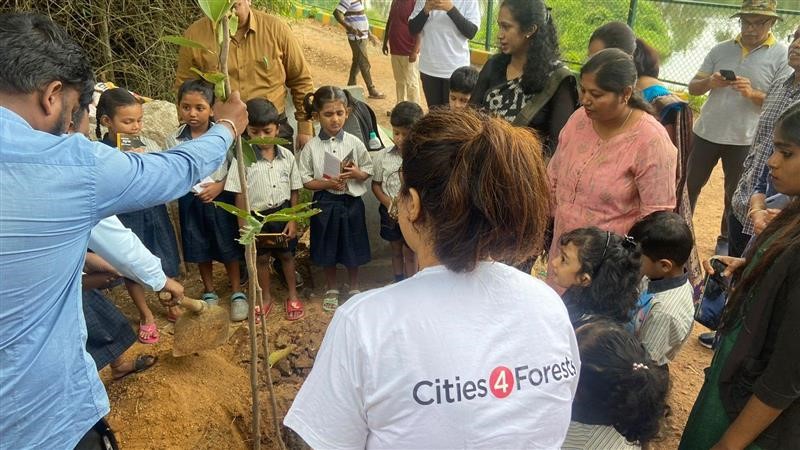Beyond the Blueprint: One Year of Grounding Bengaluru’s Climate Vision
by and -
A year ago, on an unusually warm November morning, Freedom Park in Bengaluru was abuzz with visitors gathered around several large posters. The posters announced that Bengaluru's top leadership will be launching the city’s first-ever climate action plan. With climate enthusiasts, civil society members, government representatives and students in attendance, the events at Freedom Park got the ball rolling on the implementation of this climate action plan.
November 27, 2024 marks one year since the launch of Bengaluru’s first-ever Climate Action and Resilience Plan (BCAP). The day also marks the rollout of the #BluGreenUru campaign – a call to collaborate on conserving, restoring and integrating the city’s natural infrastructure – to enhance resilience against climate change. With the release of the BCAP summary document, Bengaluru became the third city in India, after Mumbai and Chennai, to have a global standard climate action plan.
So, Where Did it All Begin?
The public launch of BCAP was an important milestone, taking place two years after Bruhat Bengaluru Mahanagara Palike (BBMP) officially started the BCAP preparation process, with WRI India as a knowledge partner. After multiple reviews and formal approvals, the first draft was created in March 2023. Then came the challenge of ensuring that BCAP does not remain just a scientifically vetted report and is implemented in line with the expectations of various stakeholders.
Bengaluru’s climate action plan preparation was strongly evidence-based, with the application of novel datasets, robust methodologies and analytics. It was also consultative, involving over 25 stakeholder departments, civil society, academia and the ward-level civic staff that deals with the day-to-day on-ground challenges. Through BCAP, the city prepared its first-ever greenhouse gas (GHG) emissions inventory and assessed prevailing climate risks and vulnerabilities. These led to the formulation of 266 actions, anchored with departments working within the seven identified sectors.

What has Happened Over the Last Year?
A Climate Action Cell(CAC) was instituted by BBMP in February 2024. The CAC is mandated to anchor the implementation of BCAP as a multi-stakeholder-driven collaborative process. It is headed by the Special Commissioner of the Forest, Environment, Climate Change (FECC) wing of BBMP and members include representatives from stakeholder departments.
In its formative days, CAC embarked on brainstorming and stocktaking sessions with knowledge partners and stakeholder departments to frame a theory of change. This fine-tuned the understanding of its primary role as an enabler and a facilitator, and partial role as a doer. The next few months saw the rollout of numerous initiatives, including a few gamechangers, such as the Climate Action Fellows Program, Friends of CAC platform, a Mapathon, and digital dissemination and outreach. Around the same time, Bengaluru became the fourth Indian city to join the Cities4Forests global alliance of more than 95 cities, with WRI India as the knowledge partner.

Some Gains, Some Challenges
The institutional framework of Bengaluru differs from cities like Mumbai, where most sectors are within the municipal corporation’s authority. Bengaluru is home to many active civil society organizations, NGOs and research organizations which work for the city's betterment. Hence, one of the biggest gains in the last year has been the creation of platforms and channels for collaboration and cross-learning to nudge climate action discourse at different levels. The rising number of climate action allies is an early sign of success. Most importantly, the CAC is now leading discussions on intersectional vulnerability vis-a-vis climate risk, which was earlier confined to the fringes. Additionally, the Fellows' program is motivating a generation of climate stewards, bridging part of the capacity gap, particularly for localized climate action.
This has resulted from a ten-month-long continuous process of brainstorming, engaging, learning, doing, reflecting and re-doing. The process comes with challenges. For example, Bengaluru has an outdated masterplan and thus lacks a statutory tool to guide its growth. Ensuring the involvement of the leadership of stakeholder departments has been a challenge that impacts monitoring, evaluation and reporting of the progress of BCAP actions and its overall coordination. City agencies lack core capacities in climate action and without permanent positions, the entire program could suffer in the long run. CAC does not yet have enough power to impact major policy and investment decisions.

The Way Ahead
Initiating climate budgeting for BBMP and key stakeholder departments can help identify gaps and align both public and private climate funding, including Corporate Social Responsibility (CSR) and philanthropic investments.
Robust Monitoring, Evaluation and Reporting (MER) protocols and designing Key Performance Indicators (KPIs) are needed to ensure stakeholder accountability, including within BBMP departments.
Integrating Bengaluru’s legacy blue-green networks into city infrastructure can build climate adaptation capacity and lead to resilience outcomes through nature-based solutions.
The energy and building sector contribute 68% of the city's GHG emissions. While the energy supply is controlled by multiple factors, focusing on the building sector offers a tangible opportunity for local action.
Lastly, appointing a chief climate officer at the city municipality and investing them with appropriate powers can help drive BCAP implementation, with reciprocal arrangements in stakeholder departments.
Together, these steps can become meaningful instruments for charting an inclusive climate action pathway for Bengaluru and ensure that the ground gained in the last year by BCAP can continue to grow.
Know more about the BCAP framework, including answers to commonly asked questions about its genesis, scope, implementation, funding, and more in the authors' previous blog, 10 Facts to Better Understand the Bengaluru Climate Action and Resilience Plan.


